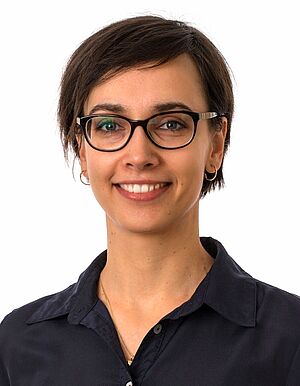QTB Team Details

Junior Gruppenleiter
Heinrich-Heine-Universität Düsseldorf
Universitätsstraße 1 Gebäude: 22.07
Etage/Raum: 00.051
40225 Düsseldorf
- Temporary Principle Inverstigator at iPHACTORY research project
- Contributing Investigator at CEPLAS
Research Profile
My main research interest covers two areas: i) the production of secondary metabolites by glandular trichomes and ii) the dynamics of photoacclimation during photosynthesis. Although these topics seem quite distant, the common ground is photosynthesis.
Glandular trichomes in tomato
i) In a collaboration with Prof. Alain Tissier (Leibniz Institute for Plant Biochemistry, Halle) I am studying the higly efficient production of secondary metabolites by glandular trichomes inside the tomato. For the more detailed description of the project, please visit this site (iPHACTORY).
Research funded by the Deutsche Forschungsgemeinschaft (DFG) under the grant agreement number MA 8103/1-1./
Key words: glandular trichomes, stoichiometric models, secondary metabolism
Mathematical models of light acclimation mechanisms in higher plants and green algae
ii) I have completed my PhD in Nov 2016, defending my thesis entitled “Mathematical models of light acclimation mechanisms in higher plants and green algae”. I was developing dynamic models (ODE based) of the photosynthetic electron transport chain with the aim to understand the mechanisms of processes collectively named as *non-photochemical quenching*. What are these? Various photosynthetic organisms use quenching as a coping mechanism under varying light conditions. They allow them to maintain photosynthetic efficiency despite constantly changing environmental conditions. When plants are lacking solar energy they try to absorb as much of given light as possible, on the other hand when the radiance is too strong, they 'waste' energy through heat dissipation to protect themselves against damage. I am using theory to simplify complex processes that are involved in capturing and transferring light energy, in a form of a mathematical model. Increase in non-photochemical quenching activity contributes to a decrease of fluorescence signal re-emitted by plants, therefore fluorescence kinetics can be used as a reliable indicator of the photosynthetic activity. Developed models calculate the fluorescence signals mimicking the measurements taken during Pulse-amplitude modulation (PAM) experiments.
As we know, both availability and quality of light (wavelengths) have influence on the photosynthetic efficiency, therefore I continue working on incorporating spectral dependency into the model. By developing further my models I want to understand to what extent we can stimulate the energy transfer by using different light wavelengths and intensities.
Research funded by the European Union under the Seventh Framework Programme (SP3-People) under the grant agreement number PITN-GA-2012-316427
Key words: fluorescence, kinetic models, non-photochemical quenching, ODE, PAM, photosynthesis, state transitions
Publications
- Matuszyńska, A., Saadat, N.P., Ebenhöh, O., (2019) Balancing energy supply during photosynthesis – a theoretical perspective. Physiologia Plantarum. https://doi.org/10.1111/ppl.12962
- Ebenhöh, O., van Aalst, M., Saadat, N.P., Nies, T., Matuszyńska, A., (2018) Building Mathematical Models of Biological Systems with modelbase. Journal of Open Research Software 6. https://doi.org/10.5334/jors.236
- Moejes, F., Matuszyńska, A. et al. (2017) A systems-wide understanding of the photosynthetic acclimation in algae and higher plants - retrospection and perspectives, Journal of Experimental Botany, 68(11): 2667–2681. doi:10.1093/jxb/erx137
- Matuszyńska, A. et al. (2017) A Young Algaeneers’ perspective: Communication and networking are key to successful multidisciplinary research, Algal Research, 21: 247-253. doi: 10.1016/j.algal.2016.07.013
- Matuszyńska, A. , Heyydari, S., Jahns, P., and Ebenhöh, O. (2016) A mathematical model of non-photochemical quenching to study short-term light memory in plants, Biochimica et Biophysica Acta (BBA) - Bioenergetics, 1857(12): 1860–1869. doi: 10.1016/j.bbabio.2016.09.003
- Matuszyńska, A. and Ebenhöh, O. (2015) A reductionist approach in modelling self regulation in photosynthetic organisms, Biochemical Society Transactions; 43(6):1133-9. doi: 10.1042/BST20150136

